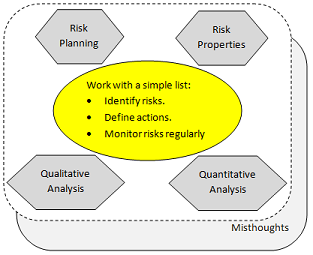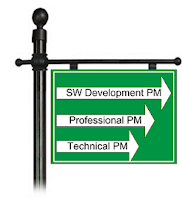
In Project Management, there are a lot of challenges which Project Managers (PMs) need to manage to keep their God (their client) happy. However, this shouldn't been thought in an extreme way. In reality, some PMs may get this wrong when they put client on the "VERY" top priority when dealing with issues happening during project life cycle.
Yes, client's happiness is always one of project goals. However, there're many other stakeholders, beside client, whose interest PMs also need to balance to make them happy. A project is considered to be successful, ideally, when all stakeholders are happy. A project in which only client is happy while other stakeholders are disappointed is considered as a failure.
1. Background
Let's take a look at PMBOK v4, Stakeholder Management.
"Stakeholders are persons or organizations (eg., customers, sponsors, the performing organization or the public), who are actively involved in the project or whose interests may be positively or negatively affected by the performance or completion of the project"
In reality, typical stakeholders in Software Development are described in the below diagram.
3. Case studies
3.1 Case study 1
| Problems With strong technical background and many years of experience in software development, Lee had moved up to Project Manager position for a few years. Also, with excellent communication skill, Lee managed client's expectation very well. One day, Lee planned for a project to be finished in 4 months. During project execution, Lee received many requests from client, some of them were detailed requirements, the other were changes against the original requirements. To make client happy, Lee clarified the requests and was willing to support every single request from client. After two months, due to reworking for supporting changes and due to new requests coming in, Lee saw that he couldn't deliver the project in the 2 months left so he asked the team to work late. Lee also requested for additional team members to support. Consequently, during the last 2 months the team worked really hard and under a lot of pressure from Lee. Finally, the project was delivered on time and also at good quality. Client was happy. At the project post-moterm review, Lee's program manager told him that even he had managed to deliver project on time, the project couldn't considered as a success. Firstly, many team members had escalated to their line managers that they're unhappy with Lee, some of them even resigned from the company. Secondly, the effort was overrun more than 50%. Being disagree, Lee argued to the program manager. He said, after all client was happy with the project and it should be a successful project. Root cause analysis Lee is a particular example of Technical Project Manager. Under stakeholder management aspect, Lee managed well one key stakeholder which was the client. However, he didn't manage other key stakeholders which are project team members and the program manager. |
3.1 Case study 2
| Problems Nam was the Project Manager and he had started one ODC for nearly 6 months. During this time, client was impressed with Nam in communication and managing their expectation. He's often very clear and very sharp when resolving project issues. While Nam was always on time in supporting client requests, he often had problem with his program manager. He wasn't willing and proactive in giving report/information to the program manager. Project status reports were often late or forgotten, he only shared the information to the program manager when being asked. He was also very strict in adding people to the project. Many people who were proposed to his project were often rejected by him because they didn't have enough required technical skills. Furthermore, he was also not willing to collaborate with QA Manager to follow the working processes. As the result, the program manager didn't know whether Nam was doing a good job but he was even annoyed being escalated some issues which he was not reported upfront. At the project performance review, even Nam had done a good job in making client happy, he still didn't receive good compliment in the project and was asked to improve the way to work and support the program manager, the QA Manager and support to develop people in the company. Root cause analysis Like the first case study, Nam supported very well one key stakeholder which was the client. However, he didn't manage other key stakeholders who are the program manager, the QA Manager and the Resource Manager. |
4. Typical Stakeholders and Their Expectation
Identifying all possible stakeholders together with their interest is the key point to succeed. In general, I list out here very typical stakeholders which PMs need to manage their expectation to make sure they are happy, hence the project becomes successful.
Stakeholder
|
Expectation
|
Client
|
The software package is delivered on time with good quality. |
Program Manager
|
- The
project is finished with good quality, on time and within
budget. - The information/report are provided in time. |
| QA Manager | The project team follows the
standard process The project team contributes to the process asset |
| Functional Managers | (QA/QC Manager, Technical Manager and Resource
Manager) - Project team members are utilized well and have right assignments - Project team members are developed and grow in the project - Principles/policies are followed. |
| Sales team | Commitments made to client as stated in SOW/Contract are satisfied. |
| Project team | Good team spirit Right workload during project life cycle |
Client happiness is always a clear goal in every project. However, beside client there are still other stakeholders who are also important to the project's success and so important to the reputation of PMs. A PM whom many people are concerned to work with couldn't be a good PM, a PM who only focuses on his own project and doesn't support to grow the organization couldn't be good neither, etc.















